Bill Gates’ latest contribution to the climate change debate has received mixed reviews. Regardless of your perspective on the multi billionaire’s role in the discussion, however, Gates highlights an important question that should, as he says, be at the heart of every climate conversation: “what’s your plan for cement?”
You might be asking yourself why cement should be a primary concern when such a huge proportion of greenhouse gas (GHG) emissions come from energy. But, in reality, emissions from the energy we use to power our homes, businesses, and transport only account for 55% of all global emissions.
We need to tackle those emissions by transitioning to renewable energyrenewable energyEnergy derived from resources that are not depleted on timescales relevant to the economy, i.e. not geological timescales., electrifying transport, and improving energy efficiency, but that alone will not reduce to zero our annual emissions, which by 2050 are projected to reach 51 billion tonnes of CO2e. As António Guterres, UN Secretary-General, emphasised at the Climate Ambition Summit in December 2020, concrete plans need to be made to “reach net-zero” and “every country, city, financial institution, and company needs […] to start executing them now.”
Those plans can’t just be focused on energy.
* BT represents 1 billion tonnes or 1 gigatonne
A concrete case for change
Cement manufacturing alone produces a staggering 2.2 billion tonnes of CO2 every year, 8% of all CO2 emissions. To make cement, fossil fuels or waste are burned to superheat lime in a kiln and produce calcium oxide — a chemical process that results in further CO2 emissions. Add to that the emissions that come from the production of other materials used in buildings and industry, like iron and steel, which accounted for 3.5 billion tonnes of CO2e in 2016, and there is a significant problem to overcome.
Steps are being taken to replace fossil-fuelled kilns with renewable energy alternatives. Commercial production of steel using hydrogen rather than burning fossil fuels, for example, was piloted in 2020, demonstrating the potential of new technologies to reduce industrial emissions, provided the hydrogen used is green. However, the required pace of technology development and cost reduction needed to match expected demand growth by 2050 is too high to rely only on this solution.
Investment is also being channelled into new chemical processes to make cement in ways that capture CO2 rather than create it. Across all industries, scaling up carbon capture, storage, and use (CCUS) activities could address 20% of CO2 emissions, according to the International Energy Agency. But even adding CCUS to the renewable energy transition still doesn’t see us hit net-zero.
Getting to zero
Tackling the emissions that remain requires a revision of how we design, make, and use products and materials. In industry, there are some particularly important areas to address: chemical processes, high heat processes, and landfill and incineration. Each can be reduced by changing the way we make, use, and reusereuseThe repeated use of a product or component for its intended purpose without significant modification. not only cement but all building materials, in ways that reduce demand for virgin resources.
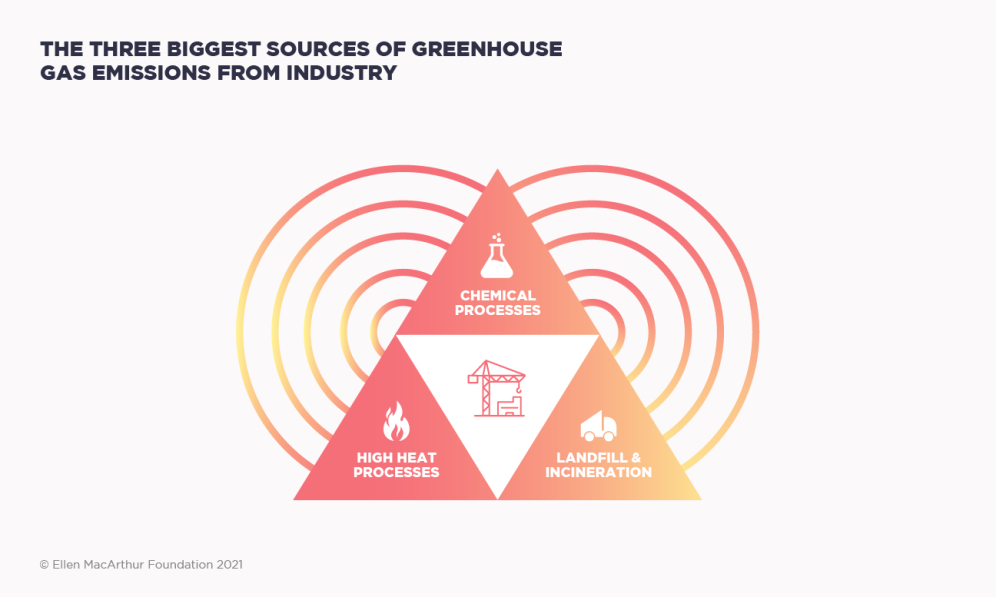
The construction and refurbishment of buildings alone account for 11% of total greenhouse gas emissions in our cities, with most of this coming from the production of cement, steel, aluminium, and plastic. Despite this heavy carbon footprint, half of the aluminium produced each year doesn’t even make it to a final product, instead becoming scrap, and the construction industry has been identified as the UK’s second-biggest producer of plastic waste. During the construction process 15% of building materials are wasted. When a building is torn down, the majority of its materials end up in landfill. In the EU alone, construction and demolition waste accounts for almost a third of total waste by weight.
The drive to upgrade our buildings so that they are energy efficient and powered by renewable energy, therefore, needs to be complemented by efforts to reduce the emissions generated from making construction materials, so-called embodied emissions, as well as those that come from how we deal with building materials at the end of their lives. This is where the circular economycircular economyA systems solution framework that tackles global challenges like climate change, biodiversity loss, waste, and pollution. It is based on three principles, driven by design: eliminate waste and pollution, circulate products and materials (at their highest value), and regenerate nature. comes into play.
There are three main circular economy strategies that directly address emissions from the built environment:
Making better use of existing buildings through sharingsharingThe use of a product by multiple users. It is a practice that retains the highest value of a product by extending its use period. and reuse so fewer new buildings need to be created
Designing new buildings for flexible use and eliminating waste in construction
Reusing and recycling building materials so that they don’t end up in landfill or incinerators
Together, these strategies could reduce global CO2 emissions from construction and demolition of buildings by 2.1 billion tonnes, by 2050, making them vital to reaching net zero.
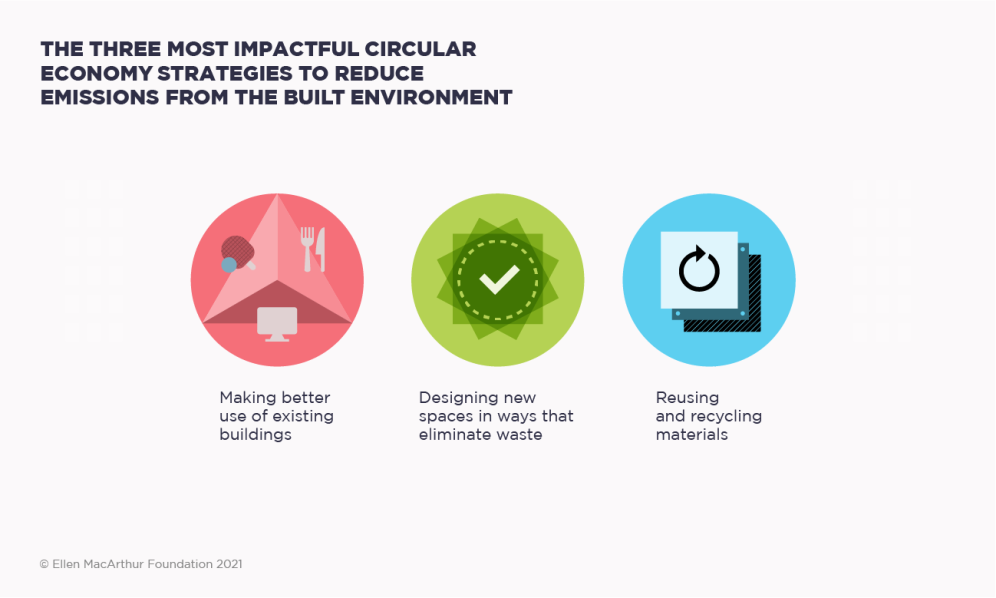
Making better use of existing buildings
A standard building has an expected structural and usable lifespan of 50–100 years, yet after less than 30 years it is often judged to lose value — its desirability and functionality — and demolition is the go-to solution, with a new building taking its place. However, if a building’s value can be maintained, and it is used more and for longer, its materials can be prevented from ending up in landfill or incinerators, and the need for new materials can be significantly reduced. Simply extending the life of existing buildings could reduce GHG emissions by 1.3 billion tonnes of CO2e per year in 2050.
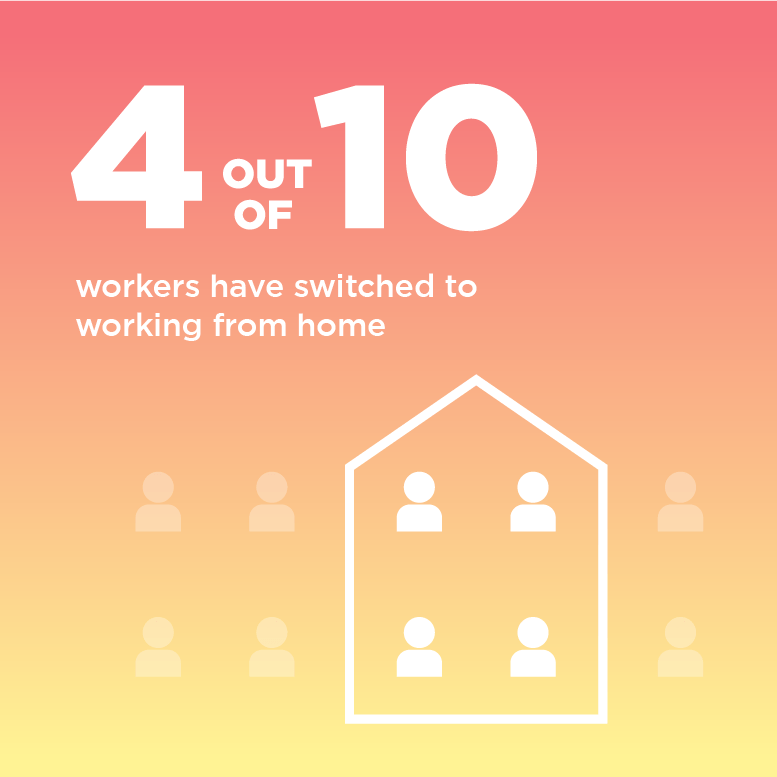
One way to do this is to give old buildings a new life by adapting them as our needs change. Efforts to revitalise the harbour area in Sydney, Australia, have included adapting a 1970s tower block for reuse, retaining 68% of its structure. The CO2 emissions embedded in these materials when they were made were equivalent to 10,000 aeroplane flights from Sydney to Melbourne.
During the Covid-19 pandemic, four out of ten workers have switched to working from home, leaving offices and surrounding retail space vacant. To ensure these buildings are used rather than demolished, spaces are already being adapted. In 2020, Housing and Urban Development Secretary for the Trump administration, Ben Carson, highlighted the opportunity to adapt vacant office space to address housing shortages, with projects now under development. In the UK, more than one million square feet of office space in London was given up by companies between March and September 2020 with many properties earmarked for conversion to residential properties. Such office-to-residential conversion also has the potential to limit new housing needs on the city’s periphery, limiting resource use, associated emissions, and encroachment into green belt areas.
While repurposing of a building may happen as infrequently as every 20 years, it can equally occur as frequently as day-to-day. Though many traditional office spaces are set for long-term conversion as a result of the pandemic, flexible coworking spaces, many of which become bars and restaurants after hours, are expected to increase in popularity. Space sharing models like this allow for buildings to be used by multiple people and businesses on a short-term basis, improving use and longevity, and also providing possible cost savings. In London, peer-to-peer renting, better urban planning, office sharing, repurposed buildings, and multi-purpose buildings could double utilisation of 20% of the city’s buildings by 2036, saving over GBP 600 million annually.
Designing new spaces in ways that eliminate waste
When new buildings need to be erected, they can be actively designed with sharing and reuse in mind, which reduces the likelihood that they will become outdated or unusable. In Mexico City, developers of Vía Vallejo have integrated commercial, residential, and hospitality spaces into a site the size of a single city block, with areas able to be reconfigured for changing needs.
Beyond multi-use buildings like these, there is the opportunity to create, as architects Heta write, “a modular and dimensionally coordinated system that will allow a space at its core to be re-made — both in terms of its bounding enclosure and internal fit out.” Design informs more than just how a space is configured and used inside, it also dictates how a building is put together, what materials are needed, and whether waste is an inevitability in construction or not. Any waste equates to unnecessary emissions. By ensuring all materials used in the construction of buildings are entirely necessary and are used, greenhouse gas emissions can be reduced by 1.2 billion tonnes of CO2e per year.
There are a number of design strategies that can be used to achieve these reductions. Incorporating prefabricated building elements can reduce material demand and mitigate or eliminate waste. This could reduce on-site waste generation by up to 90% compared to traditional construction. In Oakland, California, off-site construction of modules for a 2.4 acre mid-rise housing development reduced expected construction waste significantly while also allowing the manufacturer to substitute VOC-emitting vinyl flooring for a linoleum alternative, improving indoor air quality. Permanent modular structures such as this can also be complemented by temporary modular structures that allow for easy relocation rather than demolition, and together these strategies have been found to offer up to 60% material cost savings.
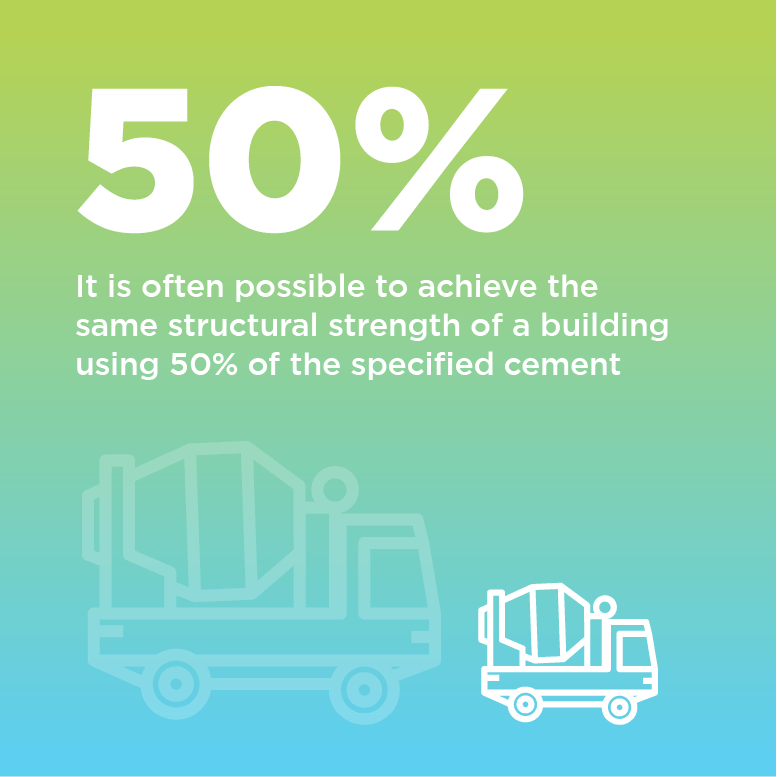
Construction projects often use more materials than is actually needed due to design choices and overspecification. For example, it is often possible to achieve the same structural strength of a building using only 50–60% of the specified cement.
New technologies, such as 3D printing for foundations and supporting structures, can reduce the quantity of materials needed through innovation in structural forms, and this goes beyond buildings to other areas of the built environment. Engineering Group ARUP undertook a project to produce 3D printed metal elements for a street lighting sculpture in the Netherlands, with the outcome being a structure weighing only half of the original design that used conventionally-made components.
Bringing such innovations to scale would be greatly helped by reforming building regulations relating to structural safety, such as the Eurocodes in the EU. Such regulations ensure structural integrity and safety standards are maintained, but many are not designed to account for non-traditional construction methods, which allow for these standards to be met while material use is reduced. It would be valuable to review such regulations in ways that incorporate the expert input of engineers familiar with recent innovations in construction technologies and processes. Such re-evaluations could also make the use of recycled materials mandatory in new buildings and facilitate the reuse of materials in reconstruction projects.
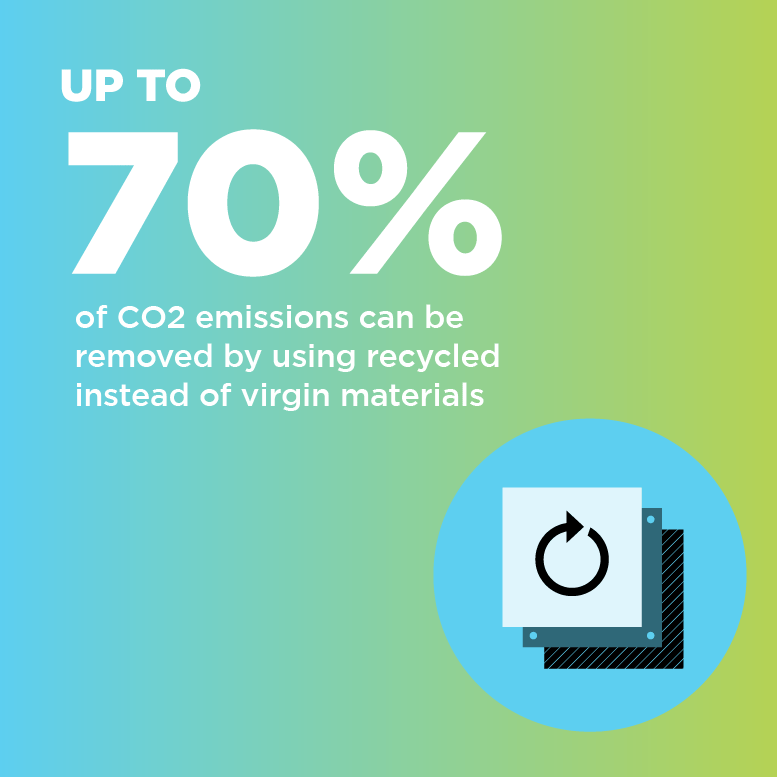
Reusing and recycling materials
Only 20–30% of construction and demolition waste is currently reused or recycled. This is often due to poor design and lack of information about a building’s material composition. However, unusable or unsuitable buildings can be viewed as material banks rather than structures that must be disposed of. Careful disassembly can facilitate material reuse and recycling, which together can prevent 0.6 billion tonnes of CO2 emissions every year.
For this to happen in practice, reliable and standardised information about building components is needed. The construction industry is notoriously fragmented, with different sub-contractors often designing and developing parts of buildings without interacting with one another, which means opportunities to reuse materials are missed. However, if each component had a digital ‘passport’ which clearly defined its material composition alongside possible reuse options, materials would be far less likely to be wasted. In Amsterdam, improving the reuse of materials in the construction of 70,000 new apartments before 2040 could reduce waste by half a million tonnes.
Reuse keeps the materials at their highest possible value, taking into account invested time, money, energy, and creativity. However, reuse is not possible for all materials, making recycling infrastructure crucial. Using recycled instead of virgin materialsvirgin materialsMaterials that have not yet been used in the economy. reduces CO2 emissions by 40–70%. To make steel from scratch, for example, a blast furnace is first used to produce liquid iron. Blast furnaces consume about 60% of the overall energy demand of a steelworks, so removing this process entirely by melting down steel that has already been used reduces energy demand by the same amount.
While steel recycling is well-established — with 85% of all steel produced being recycled globally — recycling rates for cement, plastics, and other materials are much lower. To develop the market for used materials, buildings need to be designed using recyclable and recycled materials, recycling infrastructure needs to be scaled, and the quality of secondary materials assured.
Some progress is already being made. In Rotterdam, the Netherlands, 15 tonnes of industrial construction waste has been used to create the facade of a townhouse using bricks from the start-up StoneCycling. In Denmark, recycled concrete has been used to form elements of a new warehouse, 80% of which was taken from its predecessor.
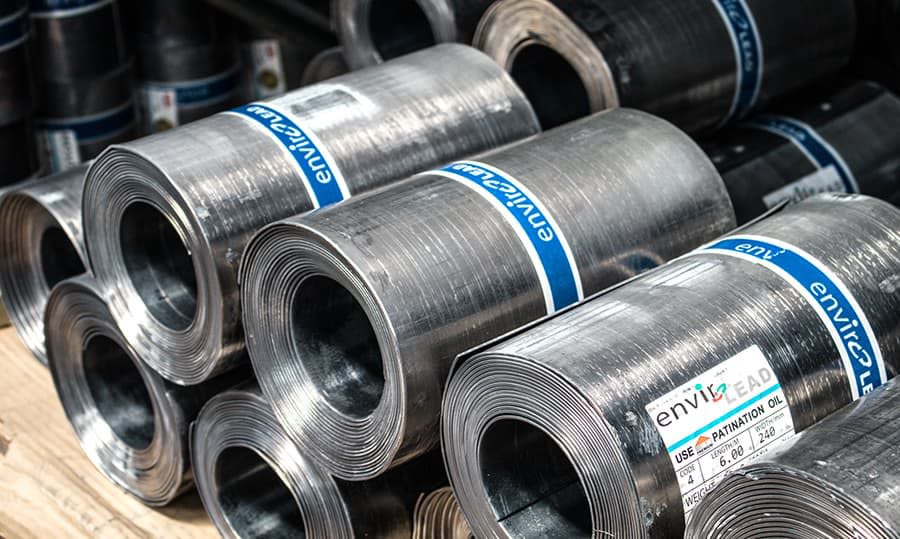
85% of all steel produced is recycled globally, though the recycling rate for other construction materials, like cement and plastic, is much lower
The future of our buildings
Projects to create a circular economy for the built environment are becoming increasingly ambitious. In 2019 the first circular economy viaduct was opened in the Netherlands. It is able to be built, disassembled, and rebuilt elsewhere. Made from 40 prefabricated concrete blocks, it is designed to have a usable life of two hundred years, by which time it is hoped that concrete recycling will be commonplace.
In Bordeaux, architects Lacaton & Vassal have made an equally powerful statement. When asked to transform the city’s public square their response was to ‘do nothing’, or practically nothing, highlighting the carbon footprint of projects aimed at regeneration. Their outlook is: “Never demolish, never remove or replace, always add, transform, and reuse!” This is a stance we could all benefit from.







